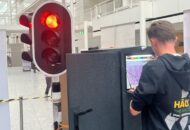IBM has in its portfolio a number of products suitable for the SME market. These are the Intel-based systems (xSeries), the iSeries (AS/400) and pSeries (RS/6000), which are mostly sold to large corporate accounts as subsystems in distributed networks.
I don’t suppose anyone outside IBM knows the accurate figures but IBM can’t have had anything like the same share of the SME sector as it has of the corporate sector. They have had some success with SMEs in the past with the System 36 and later the AS/400, but they don’t compare with Dell or HP (Compaq) in the PC market (as opposed to PCs in corporate systems), nor do their Unix (AIX) system sales compare with Sun or Intel servers running SCO Unix.
It is not that IBM don’t have any interest in SMEs, rather it is that they have the reputation of being too expensive for them, which given IBM’s overheads is probably true. However there is a sting in the tail of this for IBM, because in addition to seeing the SMEs as a potential revenue earner, the business world today is so volatile that who knows which SME today will be a large customer tomorrow? This is further compounded by all the mergers and acquisitions going on. The last thing IBM would want is for their major customers to take over another company who are dedicated to Microsoft or Sun systems.
For a number of reasons then the SME sector is more important to IBM (and HP and Sun for that matter) than the direct revenue, desirable though that is. As mentioned above there is no lack of products which IBM can go offer the SMEs, indeed the AS/400 was and still is easily the best system for business applications there is (the AS/400 however is boring, it simply works, there is none of the excitement of Windows crashes, security breaches, etc., and you don’t have to be an indispensable technical genius to keep it working). The problem is user perception more than anything, so what can IBM do to improve this? They have helped their image with the use of low key TV advertising, but it is the changing needs of IT that is creating a new opportunity. Two key trends will influence all markets, but the SMEs in particular, e-commerce and Open Source Software, coupled to a growing disenchantment with the quality, functionality and cost of Microsoft software.
The new influence on the SMEs created by e-commerce is the need to cooperate with other independent organisations, which will most likely be using a different IT system to their own. This is enforcing the use of standards. It is not essential, indeed it is impractical, to replace the individual business systems, but the interconnecting systems must be standard. Thus the emphasis must be on technology which integrates disparate existing systems together. There is a market for wholly new, integrated systems, but in the first place there is a demand for software on which integrated heterogeneous systems can be built, and the Java based Application Integration servers are the best way forward. BEA, Sun and HP are key players in this market, competing with Microsoft’s .NET system, but IBM is probably in the lead now. Again this is due to their strength in corporates, but it is a splendid opportunity to make a new attack on the SME market.
It will be most interesting to watch whether or not IBM’s concentration on Linux and Web integration will win the SMEs over or whether Microsoft’s focus on business applications is going to win< BR>
Martin Healey, pioneer development Intel-based computers en c/s-architecture. Director of a number of IT specialist companies and an Emeritus Professor of the University of Wales.





